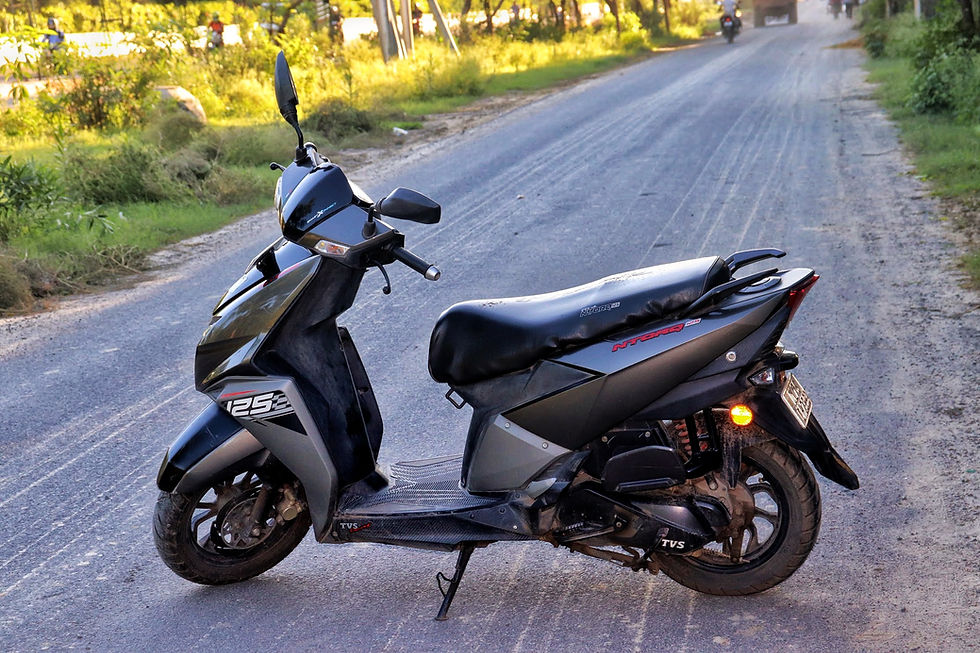Ride Impressions of KTM RC 125
- Torque Cartel

- Apr 23, 2020
- 5 min read

Kraftfahrzeug Trunkenpolz Mattighofen or commonly known as KTM, is a brand that is acclaimed for manufacturing ferociously quick bikes with impetuous abilities. Bikes like the mighty Super Duke R and the 1190 RC8 are capable enough to delineate the reason behind KTM’s immense popularity and with their recently launched naked hooligan, the 790 Duke, they made it loud and clear that deducing a bike merely on the basis of its spec sheet is no better than judging a book by its cover. Today I’ll be talking about one such bike which smothers the perceptions of those who believe that power figures are enough to justify the true potential of a bike, the bike that not only faced a ton of controversies, but was even overlooked by many just because of its “CC to Price” value, the KTM RC 125.
From the very beginning KTM is known for providing race spec configurations in its RC series irrespective of the engine displacement, and the same philosophy is evident in the RC 125 as well. The single cylinder 4-valve Liquid Cooled DOHC engine with fuel injection is wrapped up in a powder coated Tubular Steel Trellis Frame. For reference, it’s the same frame that we get in the bigger 200 and 390 RCs. But the component sharing does not just stop here as the components like the 43mm USD front forks and the 10-step adjustable monoshock at the rear are carried forward from its bigger siblings. The footpeg position along with the clip-ons unit is directly carried over. However, a minute detail that I would like to mention here is the height of the triple clamp clip-ons has been specifically raised by a slight margin in the RC 125 to provide a marginally relaxed ergonomics for the rider. Apart from that the tyres also remain the same, with a 150/60 R17 radial tyre at the rear and 110/70 R17 at the front, wrapped in Metzeler rubber. Also in the braking department we continue to get the same unit that is installed in the RC 200 which includes a 300mm front disc with 4-piston Bybre calliper along with a 230mm rear disc with a single piston calliper. So, all in all we get almost the same hardware configurations with the 125 which makes the RC series a race ready segment of bikes. However, just like the hardware, the cosmetic changes are limited to a new paint scheme and graphic design only leaving the bike to be largely identical from the design’s point of view to the RC 200 with the same futuristic design theme. I’ve always been a great admirer of the design of these RC series bikes and watching it change its outfit in every generation, I would like to say that KTM has tastefully played with the design scheme this time around. The current 125 gets the best graphic overhaul till date in the entire RC line up which perfectly complements the never ageing design of this bike.

Now with all the similarities been described of, it’s time for us to talk about the most prominent yet controversial change, the engine and controversial it is, if I may say so, as for some the 125cc motor pumping out power figures like 14.5bhp @9250rpm and 12nm @8000rpm even after its BS6 transition, is more than any of its155cc counterparts currently on sale in our country whereas on the contrary some might argue that it churns out a lot less power than its actual rival, which is the overachieving R15 V3. This is where it’s very crucial for us to understand why KTM introduced a 125cc motor in the first place? The RC 200 and 390 were a bit too aggressive for some to get their hands on a track for the very first time. Globally, especially in European states, the KTM RC 125 is counted amongst the best bikes for learners. The baby RC was never meant for speed, but to help us master our cornering abilities by letting us scrape our knee pads and still be able to walk home safe. This is what the RC 125 does best with its razor sharp handling characteristics due to the amazing chassis and perfectly calibrated clip-ons, providing a great composure especially when the leans increase all because of its best in class suspensions. All the components which earlier seemed to be an overkill for a 125cc bike start to make sense after a short track day ride. Another area where the RC shines is city commutes. It is probably the most alluring commuters currently available in our market as it provides you the big bike feel while being merciful on your wallet. On my ride I was able to achieve 42 kmpl which is fairly good even after some brisk throttling for a race spec beginner’s machine. The smooth and linear power delivery with a far more refined engine makes ambling around in city traffic much easier than on its bigger siblings.
So, despite of providing an unmatched and unparalleled level of riding experience, why is this bike still a debatable purchase? It’s the price. Now, in India we take the value for money proposition a bit too seriously that makes it hard for us to digest a 1.55 Lakhs rupees price tag for a 125CC bike. This prevalent misconception has confined us to look through the price of such bikes to their true potential and characteristics which explains why quarter litre bikes like the GSXR 250, ZX25R, KTM RC 250, etc. have never made into our market and if were to be launched, these bikes will have to accede to all the accusations for not being accessible by all and in the case of RC 125, it is even more expensive than the 155cc motorcycles currently sold in India. As per price, the RC 125 has a direct competition with the likes of the Yamaha R15 V3 and the Pulsar RS 200, both of which boasts of much larger engine displacements and power figures. On the other hand, as per power figures, this baby RC as of now competes with the Gixxer SF 150 only which is way cheaper. A bike that sits at a price stag of over 1.5L reaches at a stop speed of a mere 120kmph and even the ergonomics are not accommodating enough for all body shapes. A small and high seat, rear set footpegs along with low set clip-ons are not suited for everyday riding and to spend hours on the saddle.

So, with all these above stated indictments, where shall we put the RC 125 in the hierarchy of faired bikes in India? See that’s the point which I’m trying to make with the RC 125 that bike like these tend to create their own unique space and identity, and we as buyers must understand that. The RC line up was never meant to be practical enough for daily runs or highway trips. They’re not meant to return a high fuel economy by being cheap on running costs. These bikes were never meant to be perfect road bikes, but to set lap records on a track. The KTM RCs, with their riding dynamics and a comprehensive list of tech on offer are enough to let us master our riding abilities and become track pundits by the time we upgrade to a middle weight or litre class. This is where the RC 125 comes out to be perfect by being friendly on the track and enjoyable over the tarmac as well.
Soumil Dey - Author



Good Job